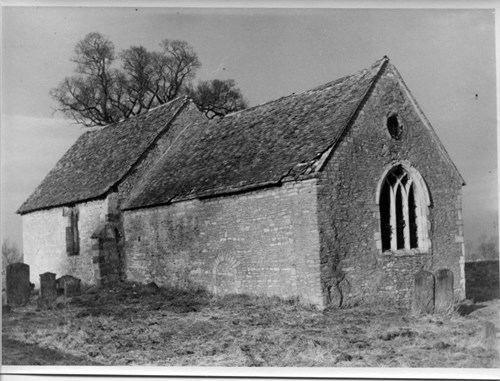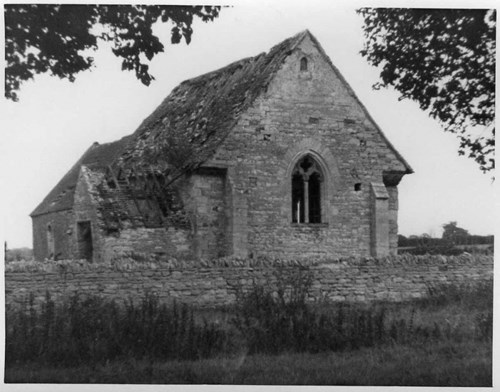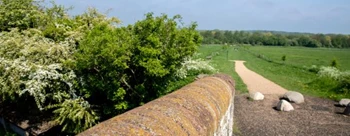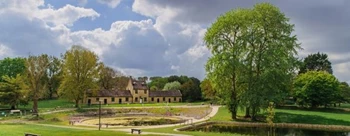St Peter's Church

The Grade II listed remains of St Peters Church and remnants of a walled graveyard can be found in Stanton Low Park, near Great Linford Manor Park. With parts dating back to the 12th century, St Peters Church was built to serve the parishioners of Stantonbury Village and was still in service until the end of the 19th/early 20th century. The chancel arch dates from around 1150, a third arch was added for strengthening around the 14th century, this removed to St James Church in New Bradwell after the roof of St Peters collapsed in 1956. The almost complete limestone east wall of the chancel with 14th century arch is mainly what can be seen at the site today. Since its birth, the church has seen many alterations during its history and because of this it can be hard to date all its events.
Milton Keynes Council worked to stabilise and converse the ruins so that it could be appreciated by the future generations to come. Eventually, the custodianship of St Peters Church transferred from Milton Keynes Council to The Parks Trust in 2016.
The History of St Peter’s Church

St Peter's Church captured in 1927
A report published in 1927 (when the building was still intact and in use) suggests that the chancel was probably an early church that had a new nave added to it during the first half of the 12th century. Some of the earliest congregations would therefore have gathered in the times of Henry II and Richard the Lionheart, if not, even earlier.

Plan of St Peter's Church
The south wall of the chancel, which was unusually thick, is thought to be the oldest part of the building. Two openings pierced it; both appear to have opened into a south chapel that dates from the 12th century.
The chancel arch, once a beautiful example of Norman work, dates from around 1150 and was originally of two orders, the outer ornamented with a chevron moulding and the inner with a large roll with beak-head and grotesque ornament at intervals. A third gothic arch was added for strengthening around the 14th century. The arch was removed to St James Church, New Bradwell, after the roof of St Peters collapsed in 1956.
In the 13th century, the north wall of the chancel was rebuilt, and a north aisle was added to the nave. The west wall of the nave was rebuilt in the 15th century. The north aisle was likely completed in the 13th century and removed in the late 16th century, when the arcade was blocked and the north porch was built.
By the 1950s, the church was no longer in service. The picture below, taken in 1951, shows the buildings state at this time. Unfortunately, this was the start of the buildings eventual collapse that took place in 1956.

Save St Peter's Church
To help raise awareness of the importance and history of St Peter’s Church, a volunteer group called ‘Save St Peter’s Church’ was formed prior to The Trust's custodianship. Unfortunately, the group has dissolved since but their passion and influence to preserve the site remains. One of the members believed 'Today, sadly, St Peters is but a broken shell, of the proud little church that weathered nearly a thousand years of English history. None-the-less with a little TLC, and a supportive community, these stones can stand proud for many more years, as a quiet and tranquil reminder, of the people, history and heritage around which a new city has grown.'
Interactive 3D model of the Church
Directions to St Peter's Church
What3Words location: ///marzipan.usual.juniors
Find on Google Maps
Other Heritage in our Parks:
-
Bancroft Roman VillaFind out more about the discovery of the Roman Villa found at Bancroft in the 1970s.
-
Great Linford Brick KilnsBrick Kilns originally built by local merchant George Price located at Great Linford beside the Grand Union Canal.
-
Great Linford Manor Park ProjectLearn more about our National Lottery Heritage funded project to 'reveal, restore and revive' the park.









